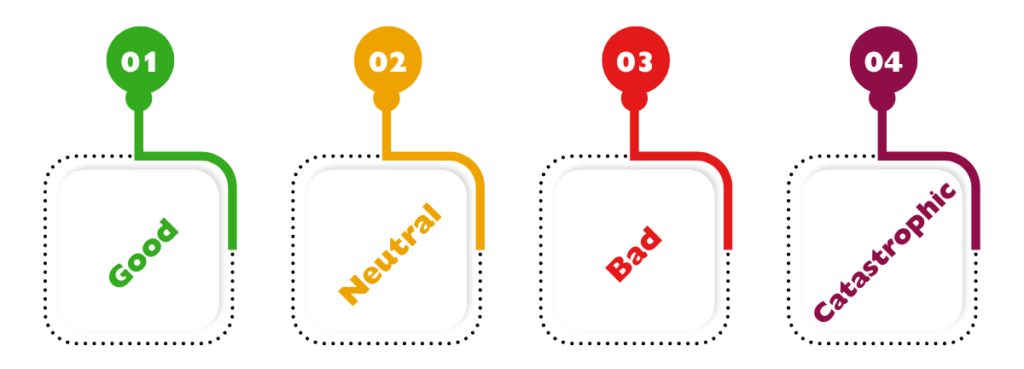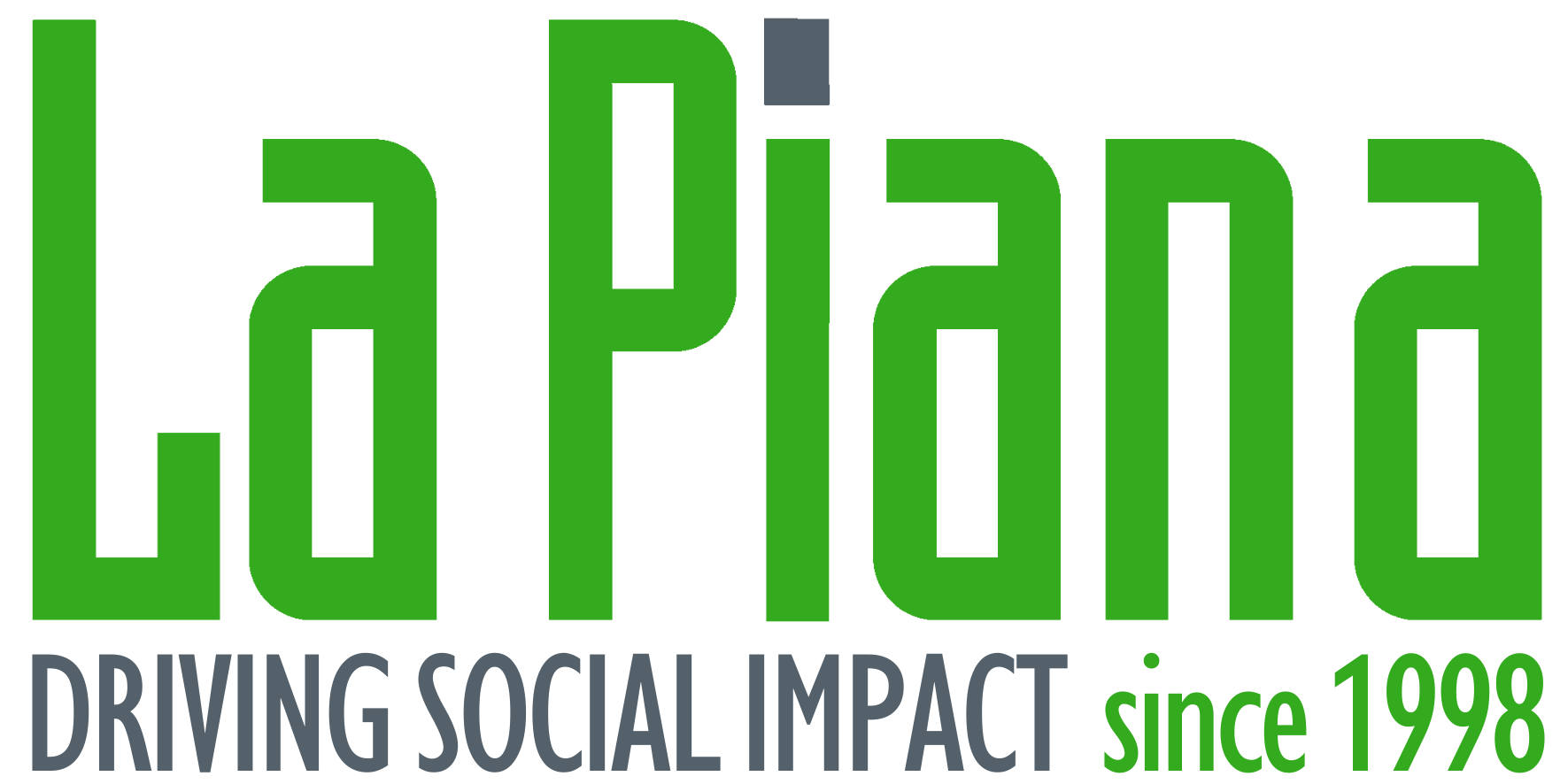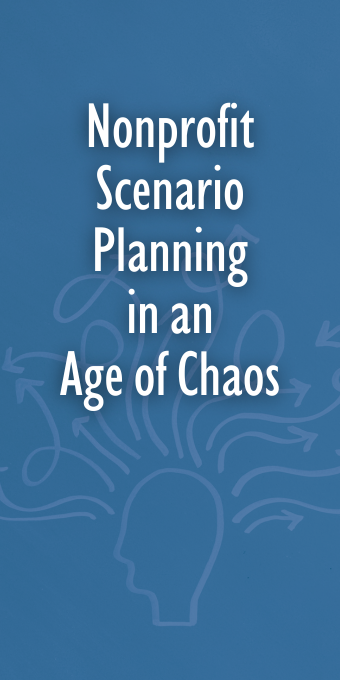Nonprofit Scenario Planning in an Age of Chaos
Traditionally, strategic planning has been a time-bracketed exercise with practitioners debating whether three or five years is the right planning horizon. Way back in 2008, with the world already moving much too fast for static multi-year plans, La Piana Consulting pioneered Real-Time Strategic Planning. The nonprofit sector responded enthusiastically, including those organizations that were able to quickly make strategic pivots when the COVID-19 pandemic began.
It’s now 2025. In the past five years, we’ve experienced the rise of artificial general intelligence (and soon artificial superintelligence); we’ve observed significant investment in DEI and ESG, followed by backlash and disinvestment; and we’ve seen the emboldened, authoritarian return of Donald Trump to the White House. The pace and extent of change have accelerated even beyond what seemed unsustainable in 2020.
Enter the Era of Extreme Unpredictability.
Unpredictability is Becoming the Norm
For nonprofit board members, executives, and funders, uncertainty (difficulty knowing which of several futures will come to pass) is a familiar challenge while unpredictability (difficulty knowing all likely futures) can be downright terrifying.
For example, in years past, when Republicans would issue a predictable call to reduce federal spending on issues important to nonprofit leaders, advocates would mobilize and the result might be a reduction (or even an increase) in funding. However, nonprofits around the world and the communities they serve were stunned soon after Trump’s inauguration by the sudden freeze of all federal grant dollars, including funds already approved for distribution. Many organizations dropped everything, including closing down critical programs and operations, in a scramble to figure out what options they had available to sustain their work. They then experienced whiplash when the freeze was halted three days later.
Just two years ago, AI was the stuff of Sci-Fi. Then ChatGPT arrived and changed everything. In 2025, advances in AI threaten to upend every aspect of work. Over the next four years, many tech observers predict AI will achieve intelligence equivalent to that of the top professionals in every field, combined. How will this impact communities, causes, and nonprofits? No one really knows.
What we do know is that while uncertainty is the nonprofit leader’s constant companion, would-be disrupters are increasingly employing unpredictability and chaos as tools to achieve their goals. We also know that more and more nonprofit and foundation leaders are finding themselves in political and/or cultural crosshairs.
Consider four potential scenarios.

- Scenario 1: Good – An organization’s staff and supporters rally together against a common threat. Buoyed by additional funding and public support, the organization can invest in deepening or expanding its work.
- Scenario 2: Neutral – An organization that experienced double-digit year-on-year growth from 2020 to 2024 might find itself stalled. Funders may reduce support as the organization’s work may no longer be top of mind for a large swath of the public, but it faces no overt attacks.
- Scenario 3: Bad – Funders either divert resources to new, higher priority issues or retreat from support of an organization’s work under political or social pressure. There is pain here, for sure — possibly layoffs and program closures — but the organization will survive.
- Scenario 4: Catastrophic – In this scenario, an all-out attack on an organization threatens its survival. A major public funding source could be gutted, philanthropy could turn away from the issue under political or social pressure, or a legal challenge such as HR 9495 could threaten its existence.
A New Approach to Scenario Planning for a New Era
Scenario planning, like traditional strategic planning, is premised on a belief that with enough data and a sound analysis, an organization can assign a reasonably accurate likelihood to each potential future it may face. But in an era of extreme unpredictability, data collection and analysis are only the beginning. An organization needs to determine its Must Do’s, Won’t Do’s, and Might Do’s.

Must Do’s are steps you should take now because — whatever happens — they will strengthen your ability to respond and toughen your organization’s resilience. Scouring the budget for cost savings, for example, will help, no matter what. Other Must Do’s might include strengthening (or building) relationships with congressmembers who could influence your issue, banding together with others, especially those in influential congressional districts, to ensure your collective voice is heard, and ensuring your board is strong and engaged.
Won’t Do’s are red lines you will not cross, no matter what. These will be different for every organization but anything that violates your mission should be on the list. There is little point to surviving a political attack if you only do so by violating the trust of your constituents. This is not a new concept. “For what shall it profit a man, if he shall gain the whole world, and lose his own soul?” (Mark 8, Verse 36).
Might Do’s are options. In an extremely unpredictable world, no action will be certain to produce positive results but some may be more likely to do so than others. For this reason, sequencing is advisable. For example, if you have $100,000 to invest in strategies to position you for the future – which you do not yet fully see – rather than choosing the most likely scenario and investing everything in it, perhaps invest in several smaller scenarios, keeping back the bulk of your funds for when the world becomes clearer.
A fundamental principle of this approach is that for any organization or field, the era of extreme unpredictability will eventually bring clarity, at least for a time. Funders will decide to renew support for the next year – or not. Politicians will attack your work – or not. Anticipating possibilities, even some that are far-fetched, will position you best to respond.


As usual, you provide excellent material that will be of help to US charities, but also others around the world who are affected by the dramatic recent changes.
Onuka – thank you for pointing out the Must Do – Won’t Do – Might Do. If nothing else, the first two categories can ground an organization and make chaos less threatening.